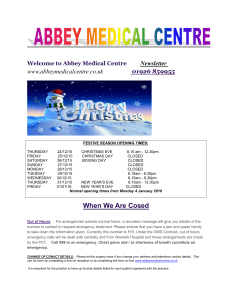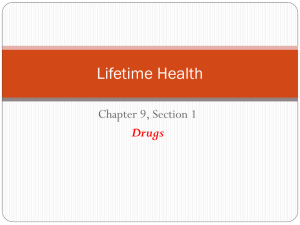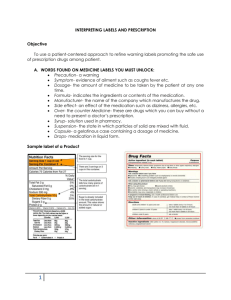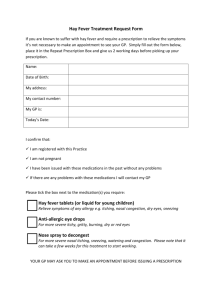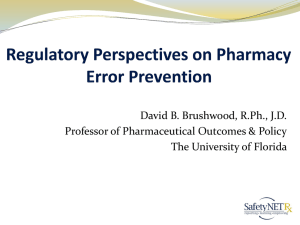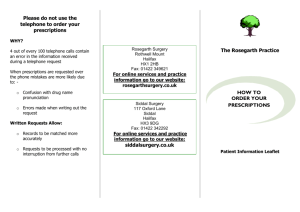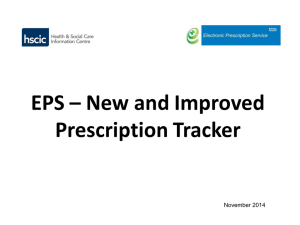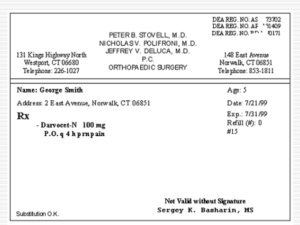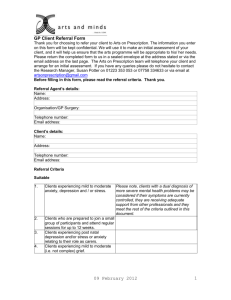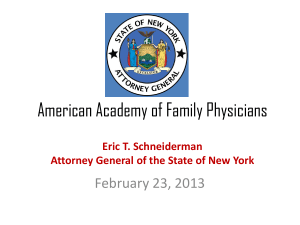Thank you for your participation in the Arkansas Medicaid Program.
advertisement
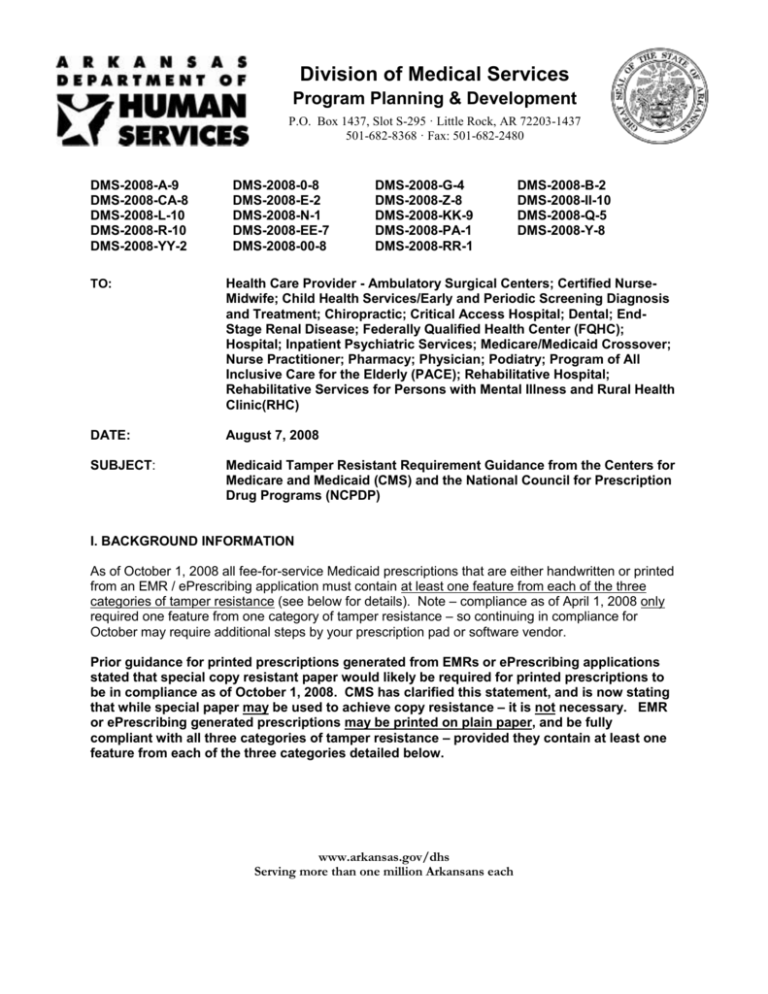
Division of Medical Services Program Planning & Development P.O. Box 1437, Slot S-295 · Little Rock, AR 72203-1437 501-682-8368 · Fax: 501-682-2480 DMS-2008-A-9 DMS-2008-CA-8 DMS-2008-L-10 DMS-2008-R-10 DMS-2008-YY-2 DMS-2008-0-8 DMS-2008-E-2 DMS-2008-N-1 DMS-2008-EE-7 DMS-2008-00-8 DMS-2008-G-4 DMS-2008-Z-8 DMS-2008-KK-9 DMS-2008-PA-1 DMS-2008-RR-1 DMS-2008-B-2 DMS-2008-II-10 DMS-2008-Q-5 DMS-2008-Y-8 TO: Health Care Provider - Ambulatory Surgical Centers; Certified NurseMidwife; Child Health Services/Early and Periodic Screening Diagnosis and Treatment; Chiropractic; Critical Access Hospital; Dental; EndStage Renal Disease; Federally Qualified Health Center (FQHC); Hospital; Inpatient Psychiatric Services; Medicare/Medicaid Crossover; Nurse Practitioner; Pharmacy; Physician; Podiatry; Program of All Inclusive Care for the Elderly (PACE); Rehabilitative Hospital; Rehabilitative Services for Persons with Mental Illness and Rural Health Clinic(RHC) DATE: August 7, 2008 SUBJECT: Medicaid Tamper Resistant Requirement Guidance from the Centers for Medicare and Medicaid (CMS) and the National Council for Prescription Drug Programs (NCPDP) I. BACKGROUND INFORMATION As of October 1, 2008 all fee-for-service Medicaid prescriptions that are either handwritten or printed from an EMR / ePrescribing application must contain at least one feature from each of the three categories of tamper resistance (see below for details). Note – compliance as of April 1, 2008 only required one feature from one category of tamper resistance – so continuing in compliance for October may require additional steps by your prescription pad or software vendor. Prior guidance for printed prescriptions generated from EMRs or ePrescribing applications stated that special copy resistant paper would likely be required for printed prescriptions to be in compliance as of October 1, 2008. CMS has clarified this statement, and is now stating that while special paper may be used to achieve copy resistance – it is not necessary. EMR or ePrescribing generated prescriptions may be printed on plain paper, and be fully compliant with all three categories of tamper resistance – provided they contain at least one feature from each of the three categories detailed below. www.arkansas.gov/dhs Serving more than one million Arkansans each Official Notice DMS-2008-A-9 DMS-2008-CA-8 DMS-2008-L-10 DMS-2008-R-10 DMS-2008-YY-2 Page 2 DMS-2008-0-8 DMS-2008-E-2 DMS-2008-N-1 DMS-2008-EE-7 DMS-2008-00-8 DMS-2008-G-4 DMS-2008-Z-8 DMS-2008-KK-9 DMS-2008-PA-1 DMS-2008-RR-1 DMS-2008-B-2 DMS-2008-II-10 DMS-2008-Q-5 DMS-2008-Y-8 As of October 1, 2008, all handwritten and/or computer generated (by electronic medical records or ePrescribing applications) printed prescriptions for fee-for-service Medicaid patients, must be fully compliant with federal and/or state guidance for prescription tamper resistance. While the first phase of tamper resistance guidance required prescribers to use at least one feature from one category of tamper resistance, this second phase requires that these handwritten or computer printed Medicaid prescriptions contain at least one industry recognized feature from each of the three categories of tamper resistance. Prescriptions for Medicaid patients that are telephoned faxed or ePrescribed are exempt from these tamper resistance requirements. As the October 1, 2008 implementation date approaches, we want to provide you with the information you need to ensure Medicaid patients will be able to receive their needed medications and ensure that the transition to these new prescription requirements is as smooth as possible for recipients, pharmacists, physicians, and other prescribers. We hope this guidance will help you comply with the requirements. While these requirements are federally mandated, individual states are responsible for issuing guidance which may be more (but not less) proscriptive than the guidance below. Some states have already issued guidance which is pertinent for this second implementation phase, and others have not. Many states have and are likely to continue accepting and forwarding to the prescriber community, the National Council for Prescription Drug Programs (NCPDP) guidance below. It is likely that the company who supplies your prescription pads/paper, and/or Electronic Medical Records (EMRs) / ePrescribing software is aware of these additional requirements and will be able to work with you to ensure your Medicaid prescriptions comply with the requirements in your state. For additional information on your specific state requirements, it is suggested that you either check your state Medicaid Web site at https://www.medicaid.state.ar.us/Download/provider/amprcd/searcharea/OfficialNotices/DMS-07-A3.pdf or the National Association of State Medicaid Directors Web site at www.NASMD.org/issues/TRPP.asp. II. REVIEW OF CMS REQUIREMENTS FOR OCTOBER 1, 2008 By October 1, 2008, a handwritten or computer generated and printed prescription must contain at least one feature in all three categories. No feature may be used twice: 1) One or more industry recognized features designed to prevent unauthorized copying of a completed or blank prescription. 2) One or more industry recognized features designed to prevent the erasure or modification of information written on the prescription by the prescriber. 3) One or more industry recognized features designed to prevent the use of counterfeit prescriptions. Official Notice DMS-2008-A-9 DMS-2008-CA-8 DMS-2008-L-10 DMS-2008-R-10 DMS-2008-YY-2 Page 3 DMS-2008-0-8 DMS-2008-E-2 DMS-2008-N-1 DMS-2008-EE-7 DMS-2008-00-8 DMS-2008-G-4 DMS-2008-Z-8 DMS-2008-KK-9 DMS-2008-PA-1 DMS-2008-RR-1 DMS-2008-B-2 DMS-2008-II-10 DMS-2008-Q-5 DMS-2008-Y-8 The following best practices are strongly suggested for adoption to meet the tamper-resistant requirements (See Appendix I for examples): Best Practices for Tamper Resistant Printed Prescriptions Category 1: Copy Resistance Category 2: Erasure / Modification Resistance Feature Description A) Void/Illegal/Copy Pantograph with or without Reverse Rx B) Micro print signature line for prescriptions generated by an EMR if they cannot produce Void/Illegal/Copy Pantograph with or without Reverse Rx The word “Void,” “Illegal,” or “Copy” appears when the prescription is photocopied. A) An Erasure revealing background (resists erasures and alterations) for written prescriptions or printed on “toner-lock” paper for laser printed prescriptions, and on plain bond paper for inkjet printed prescriptions Background that consists of a solid color or consistent pattern that has been printed onto the paper. This will inhibit a forger from physically erasing written or printed information on a prescription form. Very small font which is legible (readable) when viewed at 5x magnification or greater, and illegible when copied. Toner-lock paper is special printer paper that establishes a strong bond between laser-printed text and paper, making erasure obvious. Note – this is NOT necessary for inkjet printers – as the ink from inkjet printers is absorbed into normal “bond” paper. Category 3: Counterfeit Resistance B) Quantity check off boxes, refill indicator (circle number of refills or “NR”), or border characteristics (dispense and refill # bordered by asterisks and optionally spelled out) for prescriptions generated by an EMR In addition to the written quantity on the prescription, quantities are indicated in ranges. A) Security features and descriptions listed on the prescription A Complete list of the security features on the prescription paper aids pharmacists in identification of features and determine compliance Quantities and refill # are surrounded by special characters such as an asterisks to prevent modification, e.g. QTY **50**. Official Notice DMS-2008-A-9 DMS-2008-CA-8 DMS-2008-L-10 DMS-2008-R-10 DMS-2008-YY-2 Page 4 DMS-2008-0-8 DMS-2008-E-2 DMS-2008-N-1 DMS-2008-EE-7 DMS-2008-00-8 DMS-2008-G-4 DMS-2008-Z-8 DMS-2008-KK-9 DMS-2008-PA-1 DMS-2008-RR-1 DMS-2008-B-2 DMS-2008-II-10 DMS-2008-Q-5 DMS-2008-Y-8 III. NOTE FOR PRESCRIPTION PAD USERS If your current prescription pad vendor cannot meet the needs of the requirements, the following Web sites list vendors that comply with the requirements of states that already mandate tamperresistant prescription pads for some or all prescriptions. The vendors listed below can meet or exceed all three CMS requirements: http://www.ag.ca.gov/bne/security_printer_list.php http://www.in.gov/pla/3207.htm http://www.mainecarepdl.org/index.pl/home/tamper-resistant-prescription-pads The vendors in the chart below are vendors who have contacted Arkansas Medicaid regarding supplying tamper proof Rx pads. The vendors whose names are marked with an asterisk are those that may also be found at the above Web sites. Custom Printing 501-375-7311 www.custom-printing.com Standard Registry* 800-755-6407 http://www.securescrip.com/ Print Co* 920-685-5662 http://www.printco.com/pages/State%20Mandated%20Pres.%20Pad/ State%20CA%20mandated%20forms%20REVISED.htm Script Sheild* 866-356-1050 www.scriptshield.com Medi Promotions 800-283-0140 Secure Rx by Medi Script 800-387-3636 Rx Pro Vision Inc* 973-305-8105 mail@rxproinc.com Rx Security* 800-667-9723 www.rxsecurity.com On average it should take 2 to 4 weeks for your new prescriptions pads/paper to arrive once you have placed your order with a prescription pad vendor. If you are using a new prescription pad vendor for the first time, keep in mind that your shipment may take longer since the vendor will need to process your information. Official Notice DMS-2008-A-9 DMS-2008-CA-8 DMS-2008-L-10 DMS-2008-R-10 DMS-2008-YY-2 Page 5 DMS-2008-0-8 DMS-2008-E-2 DMS-2008-N-1 DMS-2008-EE-7 DMS-2008-00-8 DMS-2008-G-4 DMS-2008-Z-8 DMS-2008-KK-9 DMS-2008-PA-1 DMS-2008-RR-1 DMS-2008-B-2 DMS-2008-II-10 DMS-2008-Q-5 DMS-2008-Y-8 Appendix II summarizes features, including and in addition to the best practices above, that could be used on a tamper-resistant pad/paper in compliance with the CMS guidelines to meet the requirements for October 1. They are categorized according to the three types of tamper-proof features described by CMS. IV. SUGGESTED ACTIONS A. Make sure that your prescription pads or printed prescriptions contain at least one industry-recognized feature in each of the three categories listed above. Best practice examples of prescription pads and computer generated prescriptions that meet all three categories are described above and shown below. B. Contact your prescription pad vendor to secure an appropriate supply of tamper-resistant prescription pads and/or paper that will meet your state’s requirements on October 1, 2008; or contact your EMR / ePrescribing vendor to make sure that your use of the application to print prescriptions will be compliant by October 1, 2008. V. IMPACT ON MEDICAID PATIENTS In order to ensure that patients do not see any adverse impact regarding their access to medications, it is critical for you to meet all three CMS requirements, prior to October 1,2008. In an emergency situation, prescriptions written on non-tamper resistant pads will be permitted as long as the prescriber provides a verbal, faxed, electronic, or compliant written prescription within 72 hours after the date on which the prescription was filled. Thank you for your participation in the Arkansas Medicaid Program. If you need this material in an alternative format, such as large print, please contact our Americans with Disabilities Act Coordinator at 501-682-8323 (Local); 1-800-482-5850, extension 2-8323 (TollFree) or to obtain access to these numbers through voice relay, 1-800-877-8973 (TTY Hearing Impaired). If you have questions regarding this notice, please contact the EDS Provider Assistance Center at In-State WATS 1-800-457-4454, or locally and Out-of-State at (501) 376-2211. Arkansas Medicaid provider manuals, official notices and remittance advice (RA) messages are available for downloading from the Arkansas Medicaid website: www.medicaid.state.ar.us. Roy Jeffus, Director Appendix 1 Best Practices for Tamper Resistant Printed Prescriptions (Handwritten) Category 1 A) Photocopied “COPY”, “ILLEGAL”, or “VOID” Pantograph Category 2 A) An Erasure revealing background (resists erasures and alterations) B) Quantity check off boxes C) Refill indicator (circle number of refills or “NR”) Category 3 A) Security features and descriptions listed on the prescription Appendix I (continued) Best Practices for Tamper Resistant Printed Prescriptions (Handwritten) Front Void or Copy Pantograph: displays “VOID” or “ILLEGAL” on a color copy of an Rx. It will appear on a wide range of copier settings. (Cat. 1) Back Chemically-Protected Paper: Invisible coating causes “VOID” or a stain to appear on a handwritten Rx when altered by a wide range of chemicals. Toner receptor coating protects laser-printed Rx data from being removed or altered. (Cat. 2) Recommended for use with Preprinted Text Fields. Preprinted Text Fields: Quantity check boxes, refill indicators, and preprinted limitations or guidelines make the Rx harder to modify. (Cat.2) Heat-sensitive Image: An Rx, logo, or other symbol printed with Thermochromic ink, so the image changes color or disappears when it is rubbed briskly or exposed to warm breath. (Cat. 1 and 3) Security Features List: a prominent display of the prescriptions features, sometimes part of a “Warning Band” or box. (Cat. 3) Hollow Pantograph: VOID or ILLEGAL is designed to not obscure or block vital information. Often showing strongest intensity at the “top” of the document. These pantographs generally do not “pop” on a black and white fax. Appendix I (continued) Best Practices for Tamper Resistant Printed Prescriptions (Generated by an EMR) Category 1 A) Copy Resistance: Microprint signature line* Category 2 A) Modification / Erasure Resistance: Border characteristics (dispense and refill # bordered by asterisks AND spelled out) B) Modification / Erasure Resistance: Printed on “toner-lock” paper for laser printed prescriptions, and on plain bond paper for inkjet printed prescriptions Category 3 A) Counterfeit Resistance: Listing of security features Example A Category #1 – Copy Resistance: Microprint signature line* Category #2 – Modification / Erasure Resistance: Border characteristics (dispense and refill # bordered by asterisks AND spelled out) Category #2 – Modification / Erasure Resistance: Printed on “toner-lock” paper for laser printed prescriptions, and on plain bond paper for inkjet printed prescriptions Category #3 – Counterfeit Resistance: Listing of security features *Microprint Line viewed at 5x magnification THIS IS AN ORIGINAL PRESCRIPTION-THIS IS AN ORIGINAL PRESCRIPTION-THIS IS AN ORIGINAL PRESCRIPTION-THIS IS AN ORIGINAL PRESCRIPTION Appendix I (continued) Example B Category #1 – Void/Illegal/Copy Pantograph with or without Reverse Rx Category #2 – Modification / Erasure Resistance: Border characteristics (dispense and refill # bordered by asterisks AND spelled out) Category #2 – Modification / Erasure Resistance: Printed on “toner-lock” paper for laser printed prescriptions, and on plain bond paper for inkjet printed prescriptions Category #3 – Counterfeit Resistance: Listing of security features *Microprint Line viewed at 5x magnification THIS IS AN ORIGINAL PRESCRIPTION-THIS IS AN ORIGINAL PRESCRIPTION-THIS IS AN ORIGINAL PRESCRIPTION-THIS IS AN ORIGINAL PRESCRIPTION Appendix II Summary of features that could be used on a tamper-resistant pad/paper in compliance with the CMS guidelines Category 1 – Copy Resistance: One or more industry recognized features designed to prevent unauthorized copying of a completed or blank prescription form. Feature “Void,” “Illegal,” or “Copy” pantograph with or without Reverse “Rx” Description The word “Void,” “Illegal,” or “Copy” appears when the prescription is photocopied. Except where state law mandates the word “Void” or “Illegal” – it is recommended that the pantograph show the word “Copy” if the prescription is copied. The pantograph should be configured so as not to obscure the security feature description contained on the prescription, the patient and prescriber demographics, or the medication and directions. Some pantographs can be problematic because when the prescription is copied, the resulting “void” or other wording that appears makes the underlying prescription difficult to read. This type of pantograph should be avoided. We suggest that you ask your pad vendor about hollow “VOID” pantograph lettering which is less likely to obscure the prescription information. Micro printing – To be effective, this feature must be printed in 0.5 font or less making it illegible to the pharmacist when copied Thermochromic ink Coin-reactive ink Watermarking Security back print (artificial watermark) Digital watermarks Watermarking on special paper The Reverse Rx disappears when copied at a light setting – thus making the pantograph more effective in copy resistance. The pantograph may be used with a reverse Rx, but Reverse Rx is not effective as a feature by itself. Very small font which is legible (readable) when viewed at 5x magnification or greater, and illegible when copied. Ink changes color with temperature change. Ink changes color when rubbed by a coin. Printed on the back of prescription form. The most popular wording for the security back print is “Security Prescription” or the security back print can include the states name. Can only be seen when viewed at an angle. Weak digital watermarks cannot be read if copied and strong digital watermarks provide digital rights management/“proof” of origin when copied. Special paper contains a watermark that can be seen when backlit. Appendix II (continued) Category 2 – Erasure / Modification Resistance: One or more industry-recognized features designed to prevent the erasure or modification of information written / printed on the prescription by the prescriber. Features to Prevent Erasure Description An erasure revealing background (erasure resistance) Background that consists of a solid color or consistent pattern that has been printed onto the paper. This will inhibit a forger from physically erasing written or printed information on a prescription form. If someone tries to erase, the consistent background color will look altered and show the color of the underlying paper. Toner Receptor Coating / Toner Lock or Color Lock Special printer paper that establishes a strong bond paper (erasure resistance for computer generated between laser-printed text and paper, making erasure prescriptions printed with a laser printer) obvious. Note – this is NOT necessary for inkjet printers – as the ink from inkjet printers is absorbed into normal OR “bond” paper. Chemically reactive paper (erasure resistance for hand written prescriptions) Features to Prevent Modification Quantity check off boxes and refill indicator (circle or check number of refills or “NR) Pre-printed language on prescription paper Example: “Rx is void if more than XXX Rx’s on paper” Quantity and Refill Border and Fill (this is the recommended for computer generated prescriptions) If exposed to chemical solvents, oxidants, acids, or alkalis that can be used to alter the prescription, the chemically reactive paper will react and leave a mark visible to the pharmacist. Description In addition to the written quantity on the prescription, quantities are indicated in ranges. It is recommended that ranges be 25’s with the highest being “151 and over”. The range box corresponding to the quantity prescribed MUST be checked for the prescription to be valid. The refill indicator indicates the number of refills on the prescription. Refill numbers must be used to be a valid prescription. Reduces ability to add medications to the prescription. Line must be completed for this feature to be valid. Computer printer paper can accommodate this feature by printing, “This space intentionally left blank” in an empty space or quadrant. Quantities and refill # are surrounded by special characters such as an asterisks to prevent modification, e.g. QTY **50** Value may also be expressed as text, e.g. (FIFTY), (optional). Please note that while ONLY one feature from this Category 2 is required, it is strongly recommended that one feature of erasure resistance and one feature of modification resistance be used. Inkjet printed prescriptions are defacto erasure resistant based on the characteristics Appendix II (continued) Category 3 – Counterfeit Resistance: One or more industry-recognized feature designed to prevent the use of counterfeit prescription forms. Feature Description Security features and descriptions listed on Complete list of the security features on the prescription prescriptions – this feature is strongly recommended paper for compliance purposes. This is strongly on all prescriptions recommended to aid pharmacists in identification of features implemented on prescription. Thermochromic ink Ink changes color with temperature change. State Approved Vendor ID This feature is only effective in states with an approved vendor listing. Serial number Number issued by printer of prescription or uniquely assigned by EMR or ePrescribing software; may or may not be sequential. Only valid if reported and tied to the pharmacy claim adjudication process. NY is the only state that has this system currently in place. Encoding techniques (bar codes) Bar codes on prescription. Serial number or Batch number is encoded in a bar code. Security thread Metal or plastic security threads embedded in paper as used in currency. Official Notice DMS-20 DMS-20 Page 2 DMS-20 DMS-20
